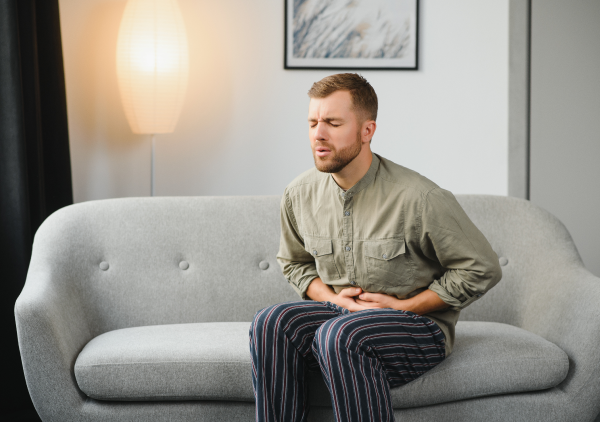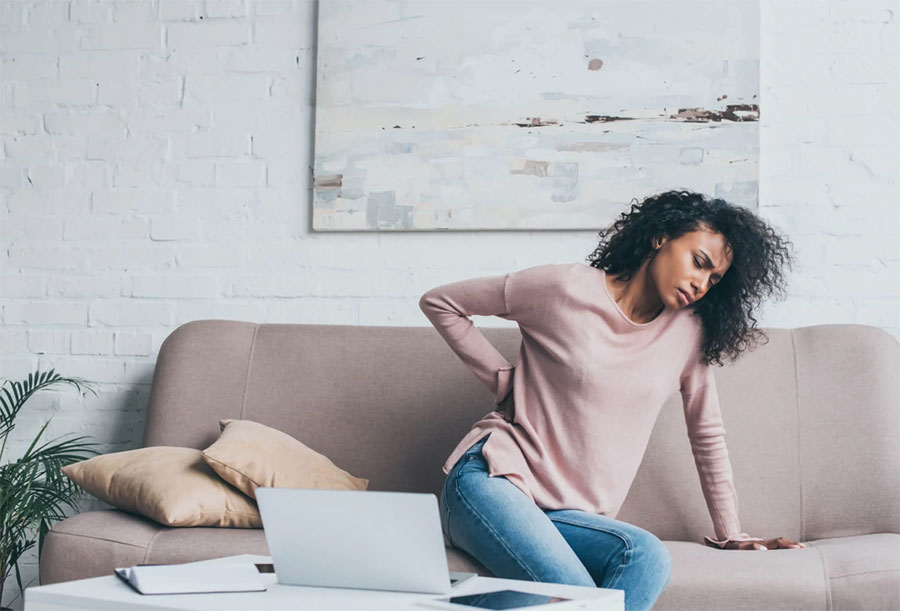Adding a cushion to your office or gaming chair might cause more problems than it solves. As a therapist and posture specialist, I understand the appeal of adding a cushion to your office or gaming chair. After all, who doesn’t want a little extra comfort when they’re spending hours sitting at a desk or gaming? But while it may feel good in the short term, adding a cushion can often do more harm than good.

ANTHROS BLOG
June 1st, 2025
Pelvic Floor Dysfunction in Men:
Symptoms, Causes, and How to Fix It
When most people think of pelvic floor dysfunction (PFD), they picture a condition affecting women—but men experience it too, and it often goes unrecognized.
Pelvic floor dysfunction in men can interfere with urinary, sexual, and bowel function—and dramatically impact quality of life. In this guide, we’ll explore what PFD is, how it presents in men, and what you can do to relieve or prevent it.
For an overview of pelvic floor dysfunction across genders, including causes and ICD-10 coding, visit our Pelvic Floor Dysfunction Resource Page.

What Is Pelvic Floor Dysfunction?
The pelvic floor is a group of muscles, ligaments, and connective tissues that support your bladder, bowel, and—specifically in men—the prostate gland. When these muscles can’t properly contract and relax, you may experience dysfunction.
Essentially, PFD occurs when the pelvic floor muscles become too tight (hypertonic) or too weak (hypotonic), interfering with the normal function of pelvic organs.
What Causes Pelvic Floor Dysfunction in Men?
There are many contributors to pelvic floor dysfunction, including:
Chronic stress and muscle tension
High-impact exercise or trauma
Poor posture and prolonged sitting
Surgery or injury affecting the pelvic area
Constipation or straining
Poor sitting posture is especially overlooked—slouched or tilted sitting can create constant tension in the pelvic floor muscles.

Common Symptoms of Pelvic Floor Dysfunction in Men
PFD symptoms in men can vary widely and are often mistaken for other conditions.
1. Urinary Symptoms
- Urgency and Frequency: A constant need to urinate or the inability to delay urination.
- Difficulty Starting or Stopping Urination: Struggling to get the urine flow going or stopping midstream.
- Incontinence: Leakage or dribbling, which can occur during daily activities or exercise.

2. Pain and Discomfort
- Pelvic Pain: Persistent pain in the lower pelvic region, which might radiate to the lower back or groin.
- Perineal Discomfort: Pain in the area between the scrotum and anus, often mistaken for other conditions like prostatitis.
- Pain During or After Ejaculation: Some men report discomfort during sexual activity, including painful orgasms.
3. Sexual Dysfunction
- Erectile Dysfunction: Tight or weak pelvic floor muscles can affect blood flow and nerve signals, contributing to erectile difficulties.
- Premature Ejaculation or Delayed Ejaculation: Changes in pelvic muscle tone can alter the timing and control of ejaculation.

Strategies to Prevent or Mitigate Pelvic Floor Dysfunction in Men
The good news is that pelvic floor dysfunction can often be managed, improved, or even prevented with targeted strategies. Here are some evidence-based approaches:
1.
Pelvic Floor Physical Therapy
- Assessment and Tailored Exercises: A physical therapist specializing in pelvic health can assess whether your muscles are too tight or too weak and design a personalized exercise regimen.
- Biofeedback: This technique uses sensors to help you understand and control pelvic muscle activity, ensuring proper engagement and relaxation.
- Manual Therapy: Hands-on techniques can help relieve muscle tension, reduce trigger points, and improve overall muscle function.

2.
Lifestyle Modifications
- Regular Exercise: Engage in activities that strengthen core muscles without overburdening the pelvic floor. Yoga and Pilates, when done correctly, can improve core stability and muscle control.
- Healthy Diet: A fiber-rich diet helps prevent constipation, reducing strain on the pelvic floor during bowel movements. Stay well-hydrated to support overall muscle function.
- Weight Management: Maintaining a healthy weight minimizes pressure on the pelvic floor.

3.
Stress Management and Relaxation Techniques
- Mindfulness and Meditation: Stress can contribute to muscle tension, so incorporating mindfulness practices can help you relax your pelvic muscles.
- Deep Breathing Exercises: Focus on diaphragmatic breathing to reduce tension in the pelvic area, helping to promote muscle relaxation.
- Regular Stretching: Incorporate gentle stretches that target the lower back, hips, and pelvic area to relieve tension and improve flexibility.

4.
Proper Posture and Body Mechanics
- Ergonomic Adjustments: Whether at work or home, maintaining proper posture can alleviate unnecessary strain on your pelvic floor.
- Avoid Prolonged Sitting: Take breaks to stand, walk, or stretch if your daily routine involves long periods of sitting.
5.
Seeking Professional Help Early
- Consult Specialists: If you notice symptoms of pelvic floor dysfunction, early intervention with a pelvic floor physical therapist or urologist can prevent the condition from worsening.
- Educate Yourself: Learning more about pelvic health empowers you to make informed decisions about your treatment and lifestyle modifications.
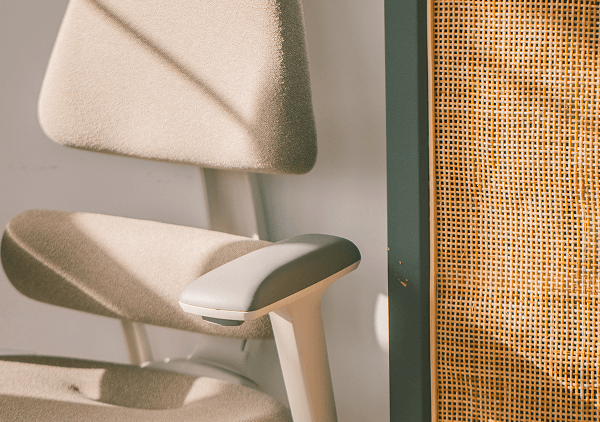
You’re Not Alone—And You Don’t Have to Live with Discomfort
Pelvic floor dysfunction in men is more common than you think. And with the right knowledge and approach—including professional care, movement, posture correction, and stress management—you can dramatically improve your quality of life.
If you suspect you’re experiencing symptoms, don’t hesitate to seek professional help. Your pelvic health is a critical part of your overall well-being, and taking care of it is essential for a healthy, active life.
Looking for a way to sit better and reduce pelvic tension?
Discover the Anthros Chair – Designed to support better posture and pelvic health.
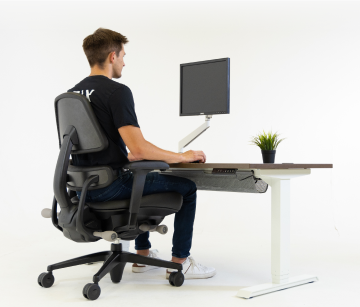
Recent Post
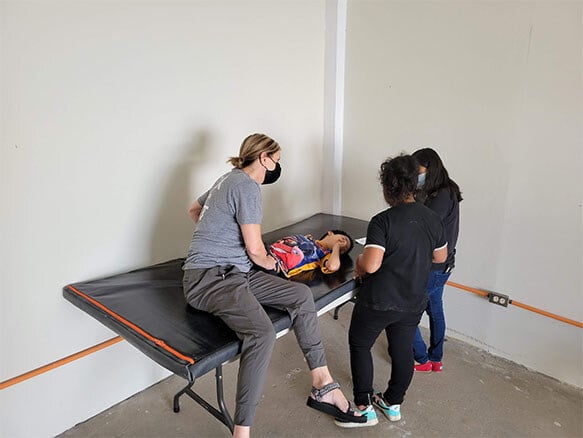
Four Lessons About Seating Everyone Can Learn from Wheelchair Users
September 18, 2025Working with wheelchair users has been an...

People Over Profits: Why Anthros Puts Comfort and Care First
September 17, 2025At Anthros, our mission is simple: to put people...





